The FSP Hydro G Pro 1000W is ATX v3.0 compatible and it is equipped with a native 12VHPWR connector, so it can withstand power spikes up to 200% of its max-rated-capacity. It has compact dimensions, with 150mm depth, and good build quality but how about its performance? You will have to read the review to find out!
FSP recently released two new Hydro G Pro units with 850W and 1000W max power, featuring ATX v3.0 and PCIe 5.0 compatibility. In this review, I will look at the 1000W model, which has enough capacity to support an RTX 4090 and a high-end CPU, e.g., an Intel 13900K or an AMD Ryzen 9 7950x. Despite the high max power, the PSU’s dimensions are compact, with 150mm depth. I have seen even smaller PSUs, though, like the FSP-made EVGA 1000 G7, which has a depth of only 130mm!
The FSP Hydro G Pro 1000W is rated Gold by Cybenetics and 80 PLUS, and it also has Cybenetics A- (25-30 dB[A]) noise rating. A selectable semi-passive operation supports its fluid dynamic bearing fan. The latter and the quality capacitors will easily outlive the extended, ten-year warranty if you don’t push the PSU extra hard under sky-high operating temperatures.
- Manufacturer (OEM): FSP
- Max Power: 1000W
- Cybenetics Efficiency: [115V] Gold (87-89%)
- 80 Plus Efficiency: Gold
- Noise: Cybenetics A- (25 – 30 dBA)
- Compliance: ATX12V v3.0, EPS 2.92, PCIe 5.0
- Alternative Low Power Mode support: Yes
- Power 12V: 1000W
- Power 5V + 3.3v: 120W
- Power 5VSB: 12.5W
- Cooling: 120mm Fluid Dynamic Bearing Fan (MGA12012XF-O25)
- Semi-Passive Operation: Yes (Selectable)
- Modular Design: Yes (Fully)
- High Power Connectors: 2x EPS (2x cables), 6x PCIe 6+2 pin (3x cables), 1x 12+4 (600W)
- Peripheral Connectors: 14x SATA (5x cables), 5x 4-pin Molex (3x cables)
- ATX/EPS Cable Length: 600/700mm
- Distance between SATA/4-pin Molex connectors: 150mm
- In-cable capacitors: No
- Dimensions (W x H x D): 150 mm x 85 mm x 150 mm
- Weight: 1.72 kg (3.79 lb)
- Warranty: 10 years
Box & Bundle
The PSU comes in a nicely designed package, which offers good protection. The bundle is rich, including Velcro straps, side stickers for the PSU, a jump-start ATX plug, fixing bolts, and two leaflets. There is also a pouch for storing unused modular cables.
Product Photos
The matte coating looks resistant to scratches, and the punched fan grille has a nice, non-restrictive airflow design. On the front side, besides the power switch, there is another smaller one for toggling on/off the semi-passive fan mode. Around the back, we find thirteen sockets, with one of them for the PCIe 5.0 connector.
Cables
| Modular Cables | ||||
| Description | Cable Count | Connector Count (Total) | Gauge | In Cable Capacitors |
|---|---|---|---|---|
| ATX connector 20+4 pin (600mm) | 1 | 1 | 18-22AWG | No |
| 4+4 pin EPS12V (700mm) | 2 | 2 | 18AWG | No |
| 6+2 pin PCIe (650mm+150mm) | 2 | 4 | 18AWG | No |
| 6+2 pin PCIe (500mm+150mm) | 1 | 2 | 18AWG | No |
| 12+4 pin PCIe (700mm) | 1 | 1 | 16-24AWG | No |
| SATA (500mm+150mm+150mm+150mm) | 2 | 8 | 18AWG | No |
| SATA (500mm+150mm) / 4-pin Molex (+150mm+100mm) | 2 | 4 / 4 | 18AWG | No |
| SATA (500mm+150mm) / 4-pin Molex (+150mm) / FDD (+150mm) | 1 | 2 / 1 / 1 | 18-22AWG | No |
| AC Power Cord (1350mm) – C13 coupler | 1 | 1 | 18AWG | – |
The cables are long enough, and there are plenty of connectors to build a powerful system. It would be nice to see thicker gauges on the EPS and 6+2 PCIe connectors.
Protection Features
| OCP (Cold @ 21°C) | 12V: 105.2A (126.25%), 12.141V 5V: 24.2A (121%), 5.033V 3.3V: 25A (125%), 3.335V 5VSB: 3.8A (152%), 5.021V |
| OCP (Hot @ 41°C) | 12V: 104.8A (125.77%), 12.152V 5V: 22.1A (110.5%), 5.044V 3.3V: 22.5A (112.5%), 3.343V 5VSB: 3.9A (156%), 5.021V |
| OPP (Cold @ 27°C) | 1277W (127.7%) |
| OPP (Hot @ 44°C) | 1272.06W (127.21%) |
| OTP | ✓ (97°C @ secondary side) |
| SCP | 12V to Earth: ✓ 5V to Earth: ✓ 3.3V to Earth: ✓ 5VSB to Earth: ✓ -12V to Earth: ✓ |
| PWR_OK | Proper operation |
| NLO | ✓ |
| SIP | Surge: MOV Inrush: NTC Thermistor & Bypass relay |
The OCP triggering points are correctly set on all rails. The same applies to over power protection. The triggering of the over temperature protection looks low, but I didn’t encounter any issues during testing, and I pushed the unit extra hard.
Part Analysis
| General Data | – |
| Manufacturer (OEM) | FSP |
| PCB Type | Double Sided |
| Primary Side | – |
| Transient Filter | 4x Y caps, 2x X caps, 2x CM chokes, 1x MOV |
| Inrush Protection | NTC Thermistor SCK-056 (5 Ohm) & Relay |
| Bridge Rectifier(s) |
2x HY GBJ2506 (600V, 25A @ 100°C)
|
| APFC MOSFETs |
2x Infineon IPA60R120P7 (600V, 16A @ 100°C, Rds(on): 0.12Ohm)
|
| APFC Boost Diode |
1x CREE C3D08060A (600V, 8A @ 150°C)
|
| Bulk Cap(s) |
1x Nippon Chemi-Con (450V, 680uF, 3,000h @ 105°C, KHS)
|
| Main Switchers |
2x Magnachip MMFT60R115PC (600V, 20.9A @ 100°C, Rds(on): 0.115Ohm)
|
| APFC Controller |
Infineon ICE2PCS02G
|
| Resonant Controller | Champion CM6901T2X |
| Topology |
Primary side: APFC, Half-Bridge & LLC converter
Secondary side: Synchronous Rectification & DC-DC converters |
| Secondary Side | – |
| +12V MOSFETs | 6x Infineon BSC014N04LSI (40V, 123A @ 100°C, Rds(on): 1.45mOhm) |
| 5V & 3.3V | DC-DC Converters: 6x NEC 2SK3062-ZJ (60V, 70A, Rds(on): 8.5mOhm) PWM Controller(s): ANPEC APW7159C |
| Filtering Capacitors | Electrolytic: 4x Nippon Chemi-Con (2-5,000h @ 105°C, KZE), 2x Rubycon (3-6,000h @ 105°C, YXG), 2x Rubycon (2-10,000h @ 105°C, YXF), 1x Rubycon (6-10,000h @ 105°C, ZLH), 1x TK (105°C) Polymer: 29x Nippon Chemi-Con, 1x NIC |
| Supervisor IC | Weltrend WT7527RA (OCP, OVP, UVP, SCP,PG) |
| Fan Controller | APW9010 |
| Fan Model | Protechnic Electric MGA12012XF-O25 (120mm, 12V, 0.52A, Fluid Dynamic Bearing) |
| 5VSB Circuit | – |
| Rectifier | |
| Standby PWM Controller | 97CL2N13 |
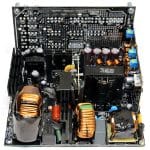
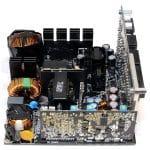
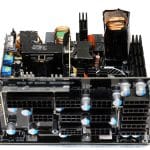
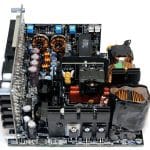
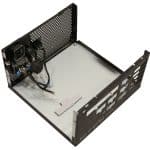
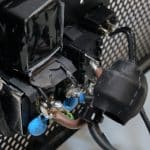
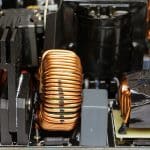
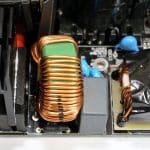
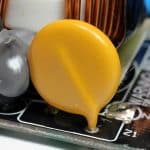
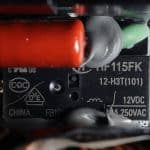
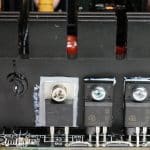

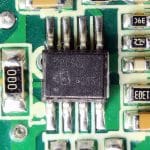
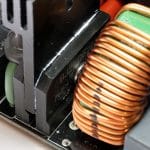
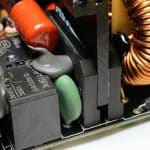
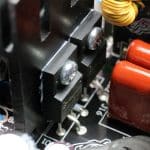
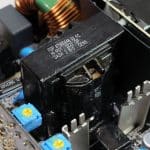
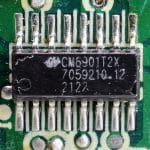
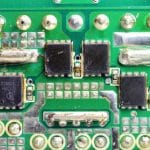
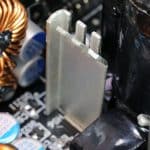
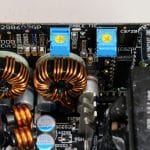
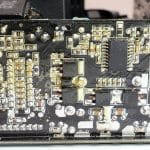
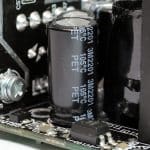

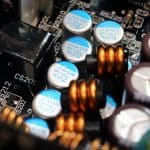
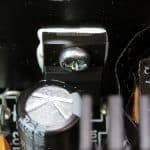
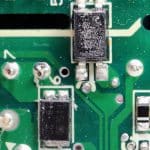
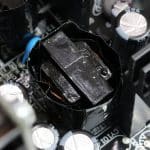
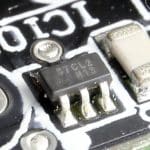
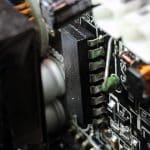
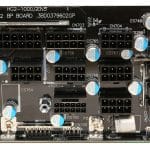

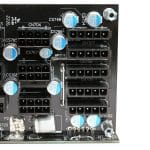

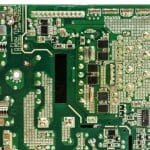
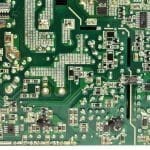


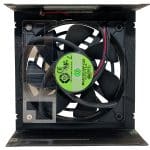
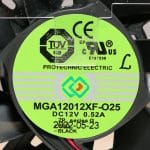
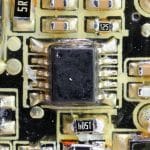
The platform looks similar to the one used by the previous Hydro G Pro units, with some modifications to meet the ATX v3.0 and PCIe 5.0 requirements. FSP used quality parts, including Japanese capacitors on the primary and secondary sides and a top-quality cooling fan by Protechnic Electric. The PCB finish in some areas doesn’t look so good, and I also spotted some longer than the optimal component leads, which won’t cause any trouble, though.
On the primary side, we find a half-bridge topology and an LLC resonant converter, while on the secondary side, FSP followed the typical recipe: a synchronous rectification scheme for 12V and a pair of DC-DC converters for the minor rails. There is also a dedicated fan controller, an APW9010 IC.
The bulk cap in this PSU has server-grade specs, with a 450V rating and 3000 hours lifetime at 105°C. Most PSUs use 2000h @ 105°C bulk caps with lower voltage ratings, 400V or 420V.
Load Regulation
I would like to see within 1% load regulation at 12V and 3.3V.
Ripple Suppression
Ripple suppression is good on all rails!
Transient Response
Transient response is good enough at 12V, but it could be better on the minor rails.
Transient Response ATX 3.0 & 12VHPWR Connector Tests
The PSU successfully passes all ATX v3.0 transient response tests. FSP did a good job here.
Hold Up Time
The hold-up time is long, and the power ok signal is accurate.
Timings
The PSU supports Alternative Low Power Modes.
Inrush Current
Inrush currents are high with both voltage inputs.
Efficiency Normal, Light & Super-Light Loads
Efficiency is decent with normal loads but low with light and super-light loads. Seeing above 70% efficiency with a 2% load would be nice.
Average Efficiency 5VSB
The 5VSB rail achieves high efficiency with 115V but doesn’t perform so well with 230V.
Vampire Power
Vampire power is low at 115V but pretty high at 230V.
Average Efficiency
The average efficiency is not among the highest in the Gold efficiency category.
Average PF
The APFC converter performs well.
Average Noise
This is a quiet operating unit.
Fan Noise & Speed Maps @ 28-32 °C
The fan’s passive operation lasts enough, but there are periods when the fan engages and spins at high enough speeds to remove the heat from the PSU’s internals. In any case, noise output remains below 30 dBA with up to 770W loads. Noise exceeds 35 dBA with more than 830W.
Overall Performance
The overall performance is slightly above the FSP-made EVGA 1000 G5, losing to the more affordable Corsair RM1000e, which costs 20 dollars less than the Hydro G Pro 1000.
Epilogue
The strongest asset of the Hydro G Pro 1000 is that it is ATX v3.0 and PCIe 5.0 ready, meaning that it can withstand any power spike that the current generation or the upcoming GPUs will create. Its build quality is high, with top-notch Japanese caps and a great cooling fan, and the extended, ten-year warranty provides a long peace of mind. The average noise output remains low, despite the PSU’s compact dimensions and the 120mm cooling fan.
I would like to see a performance increase, especially in load regulation and transient response. Efficiency also needs boosting at light loads; a higher resistance NTC thermistor would lower inrush currents. The competition is tough in the 1000W Gold category, with units by SilverStone, Seasonic, Thermaltake, EVGA, and Corsair taking the lead in the average performance chart. The Hydro G Pro 1000 is a solid and future-proof PSU, which will easily handle a demanding gaming system equipped with an NVIDIA RTX 4090, and you won’t have to use adapters since it comes with a native 12VHPWR connector.
Buy Corsair RM1000x Buy Corsair RM1000e
Buy EVGA 1000 G6 Buy Seasonic GX-1000
- Full power at 47°C
- ATX v3.0 and PCIe 5.0 ready
- Top build quality
- Properly set protection features
- Quiet operation
- Good ripple suppression
- Long hold-up time
- High efficiency at 5VSB with 115V input
- High-performance APFC converter
- ALPM support
- Low vampire power with 115V
- Lots of connectors, including a native 12VHPWR
- Fully modular
- Adequate distance between the peripheral connectors
- Quality, FDB fan
- 10-year warranty
- Overall performance needs boosting
- Efficiency at light loads should be higher
- Not so efficient 5VSB rail with 230V input
- Transient response could be better
- High inrush currents
- Thicker gauges should be used in the ATX, EPS, and 6+2 PCIe connectors

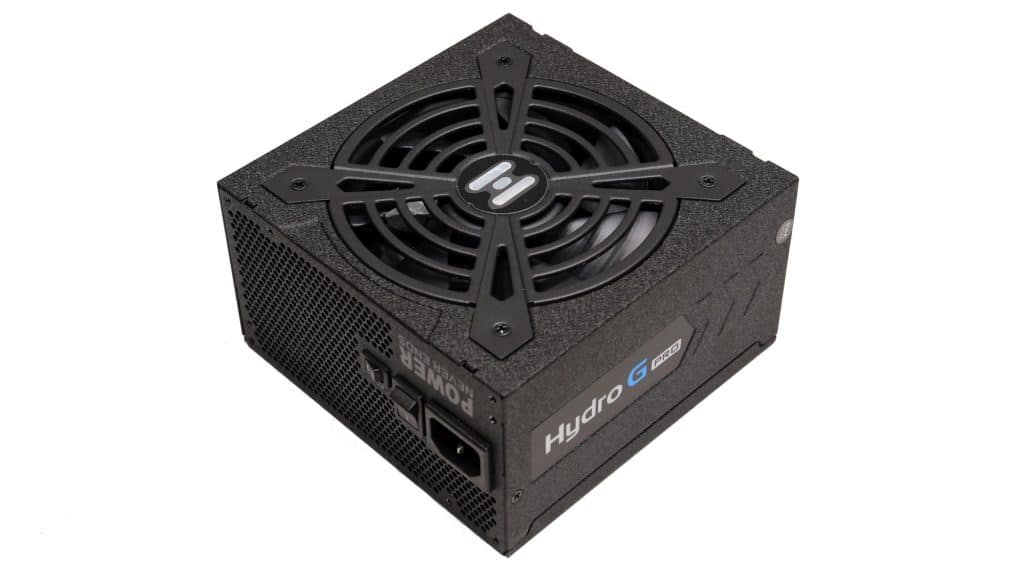
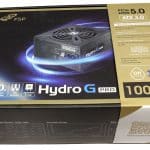
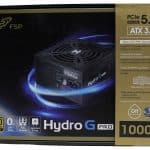
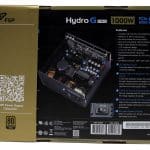
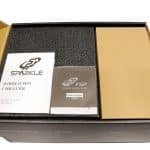
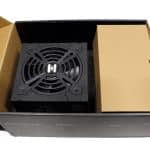
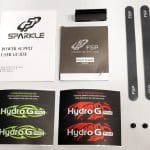

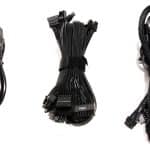
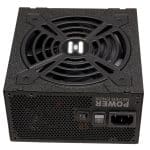
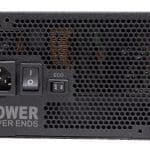
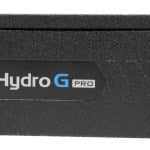

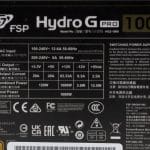
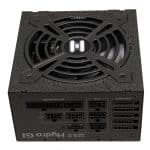

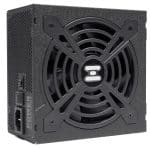
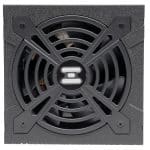
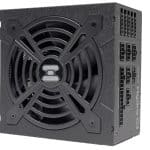
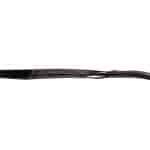
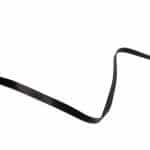

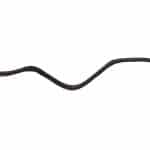
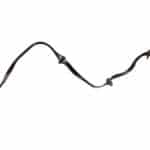
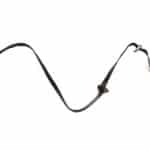
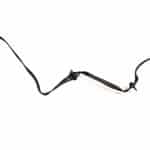
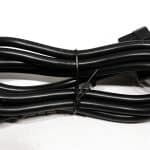
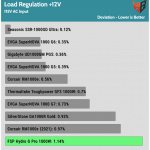
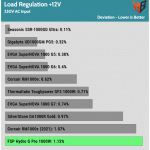
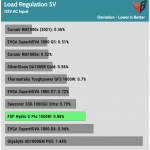
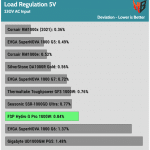
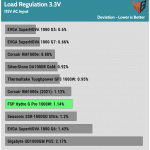

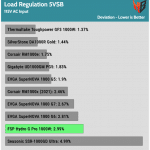

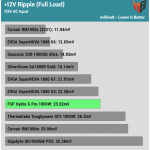
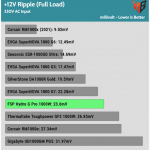
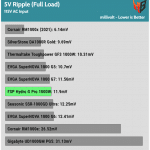
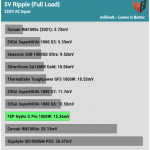
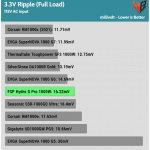
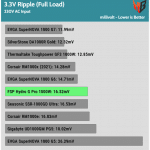

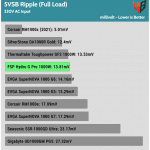
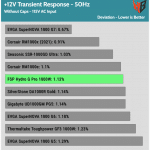
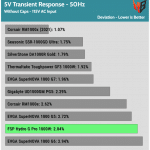

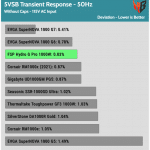
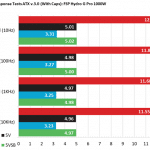
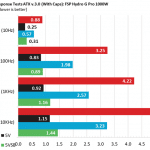

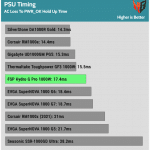
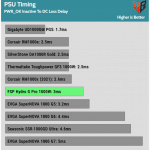


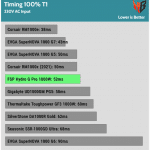
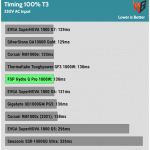
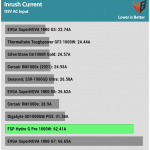
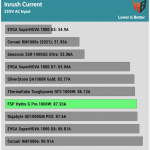
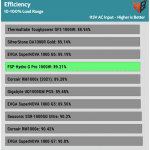
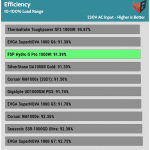

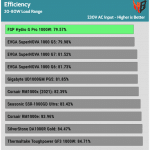
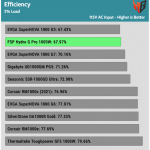
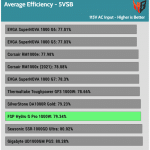
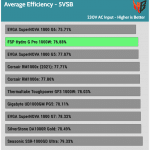
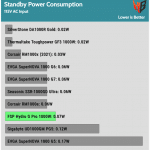
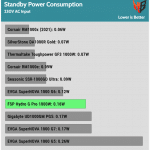
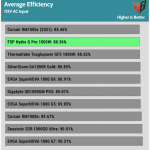
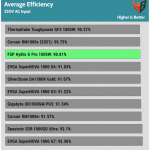
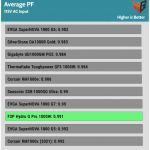
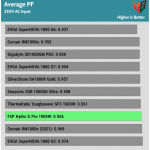


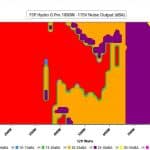
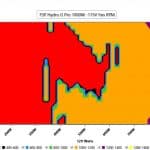
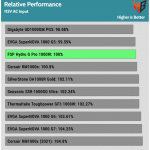
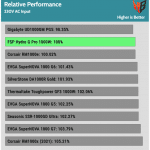
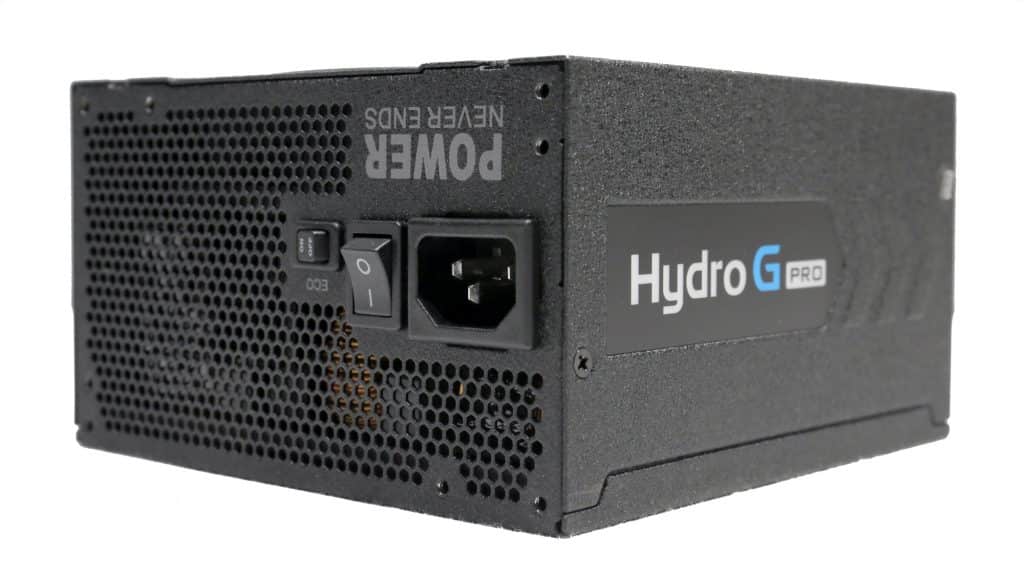


Nice article thanks! I just about a used PC with the same model but without additionnal cables. I can’t find the pinout for the PCIE 6+2 cable, it seems compatible with any PCIE 6+2 cable and I would like to use one from a Seasonic Prime TX. Do you see any risk?
Thanks!
rico
Which PSU would you chose? Same price. 230V.
Considering wattage: current PC (7500F, 7900 XT), future PC (7900X3D and 8900 XTX level of combination).
Prefer fan not to spin on and off all the time.
Longer eco/silent mode preferred.
– Super Flower Leadex VII XG SF-1000F14XG BK
– FSP Hydro G Pro HG2-1000 Gen5
Both are pretty good. The XG has higher performance if I remember correctly.
Any info if the 850w Variant have the same result?
Haven’t checked it so far, as I remember at least.
Amazing review!
In Romania the FSP is 26% cheaper than the RM1000e so it’s clear which one I’m buying.
Prices at current exchange rate:
FSP HYDRO G PRO 1000W Gold = 753 RON or $163 US;
Corsair RM1000e Gold = 1023 RON or $221 US;
which do you recommend, between this PSU, thermaltake GF3 or evga superonova p6?
thanks and greetings
Thermaltake GF3, mostly because of the native 12VHPWR
hai again bos.. congrats on being one of the best psu reviewers out there, if not the best already.. i was about to purchase tgis model, then your review came out, and im thinking the thermaltake gf3 1000w is better.. bos can you confirm that the thermaltaje gf3 1000w 12hpwr connector can reach 600watt?
Yes it has 600W connectors.